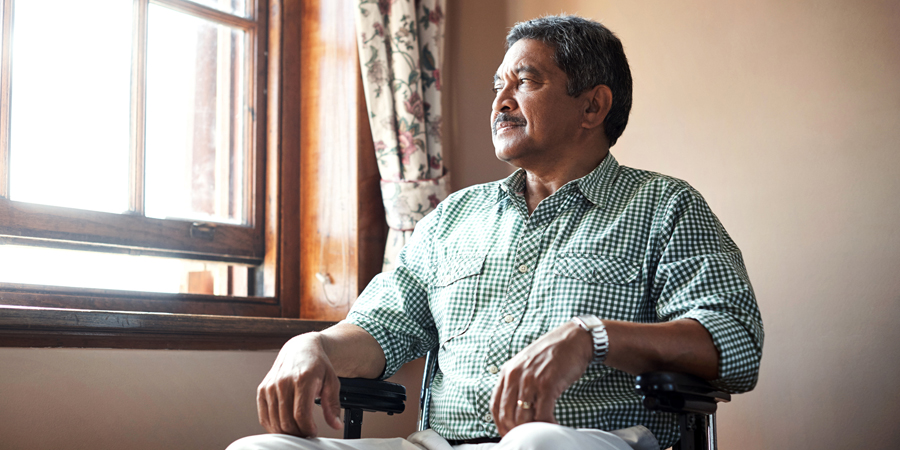As people age, they often face some challenges they hadn’t anticipated. One such challenge is social isolation. An estimated 24 million seniors live alone, according to a May 2021 report by the Administration for Community Living of the U.S. Department of Health and Human Services. Many seniors become increasingly isolated as they lose their mobility and face the reality of aging.
While a lack of social relationships is an issue in and of itself, it may also have a significant impact on post-acute care and time in the hospital. This is a story about how one patient navigated her follow-up care needs to prevent going back to the hospital.
Meet Nancy — and learn how social isolation affected her recovery
Seniors account for more inpatient hospital stays than any other age group. After time in the hospital, patients need follow-up care to ease recovery. However, patients who are socially isolated may have a harder time keeping up with follow-up care.
“Navigating the health care system can be extremely challenging, particularly after a hospitalization,” said Ellen Ford-Barton, vice president of solutions — patient navigation at naviHealth. Patients may need medications, follow-up appointments, physical therapy and other health services after their discharge. Without a friend or family member to help, it can become overwhelming — especially if they’re still not feeling well.

VP, Solutions – Patient Navigation
naviHealth
This was the case for “Nancy,” an older woman who went to the hospital for emergency surgery on her back. Before surgery, she tested positive for COVID-19, which further complicated matters. After surgery, her care team transferred her to a skilled nursing facility, where she stayed for three weeks. After discharge, her follow-up care included appointments with her primary care physician (PCP) and a variety of specialists, as well as home health care. But, like many other socially isolated seniors, she struggled to follow her plan of care.
Connecting socially isolated patients with care
More than 60% of adults age 50 and older reported being socially isolated at the beginning of the COVID-19 pandemic. These socially isolated seniors may not have the benefit of a friend or family member to help them keep up with follow-up care after a stint in the hospital. This puts them at a disadvantage that may also increase their risk of hospital readmission. By helping patients navigate follow-up care, providers reduce the chances of hospital readmission.
In Nancy’s case, naviHealth reached out to provide support after she left the skilled nursing facility. Unable to reach her after several phone calls and voicemails, naviHealth connected with her child. Nancy’s child encouraged her to take part in in a welcome call with a naviHealth patient navigator, who began coordinating post-acute care for the patient.
“Our patient navigators can quickly identify care plan and social need gaps to ensure a smooth transition to home, identify social determinants of health (SDOH) barriers and create customized plans of action to address them,” Ford-Barton said. “The goal is to take this lift off of patients and provide needed support and advocacy during the critical post-discharge recovery period, as well as connect patients to resources for long-term health, wellness and independence.”
Through several conversations, the patient navigator learned that Nancy had follow-up appointments scheduled with her PCP and several specialists. But, she hadn’t been able to connect with her home health care provider yet because of challenges with her voicemail. To streamline care, the patient navigator made an appointment for Nancy and later rescheduled it for a more convenient time that didn’t conflict with the patient’s schedule.
Successfully identifying gaps in social needs – and filling them
Throughout their conversations, the patient navigator picked up on some gaps in the social needs Nancy was experiencing. She shared that her limited income made it difficult to afford medications, food and incontinence supplies. Her lack of transportation was also weighing on her, as she didn’t want to be a burden on her friends and family members.
This isn’t uncommon for seniors. In fact, a 2021 data report from the U.S. Census Bureau reveals that 9.5% of seniors live below the supplemental poverty line and less than half of eligible seniors take part in in the Supplemental Nutrition Assistance Program (SNAP).
Since this is a common experience, naviHealth patient navigators have a lot of resources to share with patients. It’s integral to their mission, according to Ford-Barton. “We spend time listening and getting to know the patients so they feel safe and comfortable sharing very personal health and social challenges. We also educate patients on the program and the many ways we can help them recover as their partner during a challenging period.”
In Nancy’s case, a patient navigator provided her with coupons for her medication and introduced her to a community program that provided her with incontinence supplies at no additional cost. To address her food insecurity so she could make a full recovery, Meals on Wheels delivered food to Nancy with the patient navigator’s help.
After helping resolve these pressing issues, the patient navigator also taught her how to arrange transportation provided by a community organization. They regained her independence with safe transportation to and from her appointments, without relying on friends and family.
Every patient has a story to tell — each as unique as the patient themselves. Meeting their needs on a patient-by-patient case is instrumental to improving the patient experience and outcomes overall. For Nancy, there were many hurdles to overcome for her to get on the right track with her health. Luckily, the patient navigation team kept her engaged in her recovery, resulting in exactly what Nancy needed.




